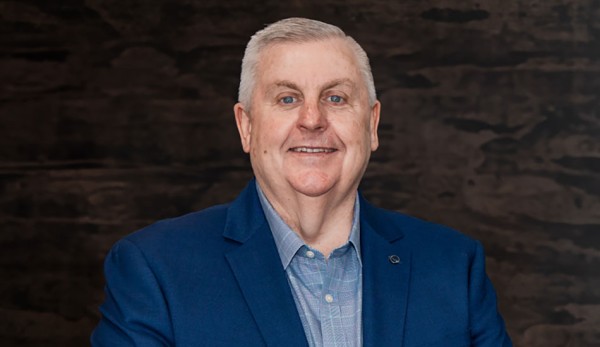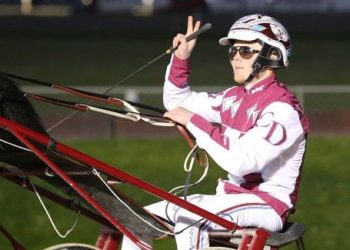After announcing major stakes increases and a host of new races, the Harness Racing New Zealand “The Future Starts Now” roadshow has come to an end after four weeks spent travelling to the main centres, talking through the changes, announcing additional concepts and placing the plan out there ready to implement.
“In the main it’s been very very positive but there’s always feedback about why can’t you do this why can’t you do that. They’re all valid questions and we have to be able to answer them. I think there’s an opportunity now for HRNZ to explain it in a bit more detail in bite size portions, so that people understand what the benefits are,” new HRNZ CEO Brad Steele said when in Invercargill last week.
He’s aware some trainers may not have fully grasped some of the information and he’s more than happy to pay them a visit in person to explain the concept.

“I understand that trainers are busy and sometimes they miss that sort of stuff. I can’t wait to call one particular trainer and say ‘I’m in your neck of the woods and I’d love to come a see you’.”
He also mentioned a trainer who has been considering scaling down but has been reenergised by the recent announcements.

“He told me he was in the twilight of his career and looking at reducing his numbers. But he now wants to fill his stable again. That’s exactly the sort of reaction we are looking for. That’s what this package is designed to do.”
When asked about racing over shorter distances and only from mobiles, Steele says he’s interested in testing the status quo on everything.
“We always need to have an understanding of what impact it’ll have on wagering. I don’t know the numbers around wagering on stand starts versus mobile but what I do know, is I would love to see more mile racing. It’s not possible on every track but I think we do need to have less distance races which may encourage horses to have maybe three starts in a month rather than two.”
While travelling around Steele was reminded of the Fast Ten concept where races were run every twenty minutes at the meeting. It was an initiative tried by the TAB and clubs but seems to have fallen out of favour.
“I’m really keen to understand what happened to that and why we can’t do it again.”
Currently harness racing is bound by horses having to run a certain time to qualify to race. Steele says he supports scrapping that model.
“As most trainers and owners would appreciate some horses need time and they may sack a horse that just needs a bit of time. I’m a big supporter of giving it (no qualifying time standard) a go. As long as the horse paces or trots it’s qualified.”
Qualifying data obtained from HRNZ between August 2022 and 15th July 2024 show 1984 horses qualified. Of those horses, 1525 have raced at least once in an official race in New Zealand. And 236 of those horses have been exported – 32 of them without having raced.
“We’re looking at increasing our horse pool so let’s make it easier for horses to qualify and race like for like and who knows, with a bit of time and racing some of these horses could turn the corner.”
Steele also understands the importance of having a good working relationship with the country’s politicians.
“It’s really important. Each time I’m down in an area I want to try and catch up with the politicians to make sure they understand the economic contribution harness racing is making to the area. Later this month our Minister Winston Peters is hosting a lunch at Parliament House just for harness racing. He can see what we’ve announced is blowing wind in the sails of harness racing.”
Steele added there’ll no doubt be ideas down the track which will include some changes which will require political support.
“I was actually quite amazed how little racing gets from the point of consumption tax. I think we need to have a conversation with the Minister about getting an increase in our share from the point of consumption tax.”
Ownership is another key driver in Steele’s view.
“I’ve got a firm belief that if your ownership numbers grow, everything else grows with it. I do have a strategy that I haven’t presented to the Board yet on the role syndication can play. The reason I talk about syndication is that we need to grow owners at scale.”
Regarding stakes increases, two additional $500,000 slot races have been added to the new racing programme. These will be run on Show Day at Addington.
“The feedback we got when we announced slot races was that they’re there for a privileged few and that could be the case. We need to change it where we broaden that opportunity (for example) connecting someone with say $1,000 to a syndicate so they can be a part owner in a slot. That’s how you get sustainability in slot racing. There’s a role there for HRNZ to promote that.”
Raceday secretaries often express frustration at race nomination time as trainers can be scared off by quality horses in their race. This can lead to drop off at acceptance time or the movement of horses from one meeting to another. Steele is keen to look at closed nominations where trainers are unable to see who else is in their race.
“I hope I don’t stand on a landmine here but I’m absolutely keen to give it a try. I see sometimes nominations for a Friday night meeting are extremely strong. A few other horses get nominated and all of a sudden the pool shifts from a Friday night to Sunday. Maybe we just ‘ghost out’ the nominations so people can’t see who’s been nominated. The other thing I’m keen to test is open nominations. If you’ve got a horse that’s fit and you want to race it go and nominate it. It’s then up to the handicapper to slot it in somewhere. Let’s have a try and see how it goes.”
With $10 million invested annually in stakes for the next three years, Steele says he’s certain more Australian horses will head to his side of the Tasman.
“The moment we made that announcement I got on the phone to some owners in Australia just to let them know what we’d announced. In the next few weeks, you’ll see more and more announcements on Friday Night Lights made around Cup and Show Day. I think we’ll get more of that Anzac spirit into New Zealand.
“I wouldn’t totally rule out some Australian based owners sending back to New Zealand. I have spoken to a few significant owners in Australia and they’re very interested in what we’ve announced in Auckland. So they may be able to support us by sending the right horses back to New Zealand.”
A major gripe over the last two decades has been around handicapping and programming and we can expect some major changes in these areas.
“Lots of changes will need to happen. I’m really keen to challenge the status quo. The Future Starts Now is not just around prize money it’s also about behind the scenes things that HRNZ can do. We need to be a little more creative around programming and a bit more ambitious. We need to continue to get the insight as to where the right changes need to happen. I understand that programming and handicapping can’t be everything to everybody but if we can appeal to more people that would be a good step in the right direction.
“We need to provide the industry with a three month programme, not week by week or fortnightly. We need to come out with a three month advance programme to allow trainers to better map out a programme for their horses. That’s where we need to get to and I’d like to think we can, in the next six to twelve months.”
The Future Starts Now has received a very positive response around the country and with more announcements still to come the levels of enthusiasm should increase.
Over the years other leaders have been noticeably absent from regional harness race meetings. But Brad Steele has promised he’ll be moving around the areas regularly, getting a feel for the industry.
“I love going to the races. That’s where you find out where we’ve got pain points and what is actually working. The races I’ve been to at Addington I’ve been in Spectators not in the Chairmans room. I hope to be down in Southland hopefully every six weeks.”
by Bruce Stewart, for Harnesslink

 USA
USA Canada
Canada Australia
Australia New Zealand
New Zealand Europe
Europe UK / IRE
UK / IRE



